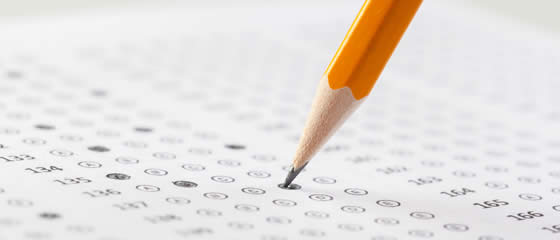When is the best time to take the SAT or ACT?

When is the best time to take the SAT or ACT? Should you get it over with early, at the end of 10th grade or start of 11th grade? Should you take it your junior spring, along with most other students? Should you wait until senior fall in order to benefit from the knowledge you will gain in 11th grade?
The simple answer is that you should only take the SAT or ACT when you are fully prepared to get the score you desire. While some colleges do not require you to send every SAT or ACT score, you should never look at the SAT or ACT as a practice run. Only under rare circumstances should you take the SAT or ACT more than three times. Always go into the test with the mindset that this attempt will be your last.
The SAT and ACT are offered at various dates throughout the school year. High school seniors get three more chances to take the SAT (October, November, December) and ACT (September, late October, December) before the final college application deadline, but only one chance at each test (October for the SAT, September for the ACT) before the early decision or early action deadlines at most colleges. Ideally, most students will already have their desired test score before entering 12th grade or will be giving the test one last shot in September or October. Students should try to get as much testing out of the way as possible before entering 12th grade.
Top students (10th grade PSAT score above 200) who are entering 11th grade should consider studying for the October PSAT in order to be considered for a National Merit Scholarship. Because the PSAT is essentially a shortened version of the SAT, PSAT preparation will also apply to the SAT, which students should take in November, shortly after the PSAT. Students who expect to be recruited athletes should also consider completing the SAT or ACT in the fall of their junior year, as having an official score will help coaches give students a better indication of their admission prospects. Freshmen and sophomores should not take the SAT or ACT under any circumstances. Wait for the development of intelligence that will naturally occur as the student grows, and rely on PSAT scores to gauge future SAT or ACT potential.
Students should heavily consider which dates they will take the SAT and ACT. Prepare for every test like it will be the only time you will take it.
Students should avoid taking the SAT or ACT during busy time periods for academics, sports, and other extracurricular activities. It is important to plan ahead in order to avoid conflicts. For most juniors, the winter or early spring is the ideal time to take the SAT or ACT for the first time. The SAT is offered in January and March; the ACT is offered in February and April. Winter and early spring dates are late enough that students have time to continue to develop intellectually and to absorb new content from the first half of 11th grade. Yet, these dates are early enough that they avoid the end of junior year crunch and give students several opportunities to take the test again if they don’t receive their desired score on the first attempt. These dates may also correspond with students’ winter or spring breaks, which provide an excellent opportunity for intensive SAT or ACT prep.
May and June are very busy months for 11th grade students. In addition to taking final exams and AP tests, students who hope to attend top colleges should also take at least two SAT Subject Tests in May and June. For more information, check out our blog articles about SAT Subject Tests and how to prepare for Subject Tests. Even students who do not need to take SAT Subject Tests should try to avoid taking the SAT or ACT in May and June, as this is a busy time of year for all juniors.
To maximize your chances of a good SAT or ACT score, you should devote yourself entirely to preparing for a single test date. Reaching your potential on the SAT or ACT requires a rigorous preparation regimen. At Cardinal Education, we provide students with 1-on-1 tutoring programs fully customized to help students get the best score possible. Contact us today to find out more about our services and schedule a diagnostic test.
Like what you see here? We are happy to permit you to use our material as long as you link back! Please refer to us as the Cardinal Education Blog.

